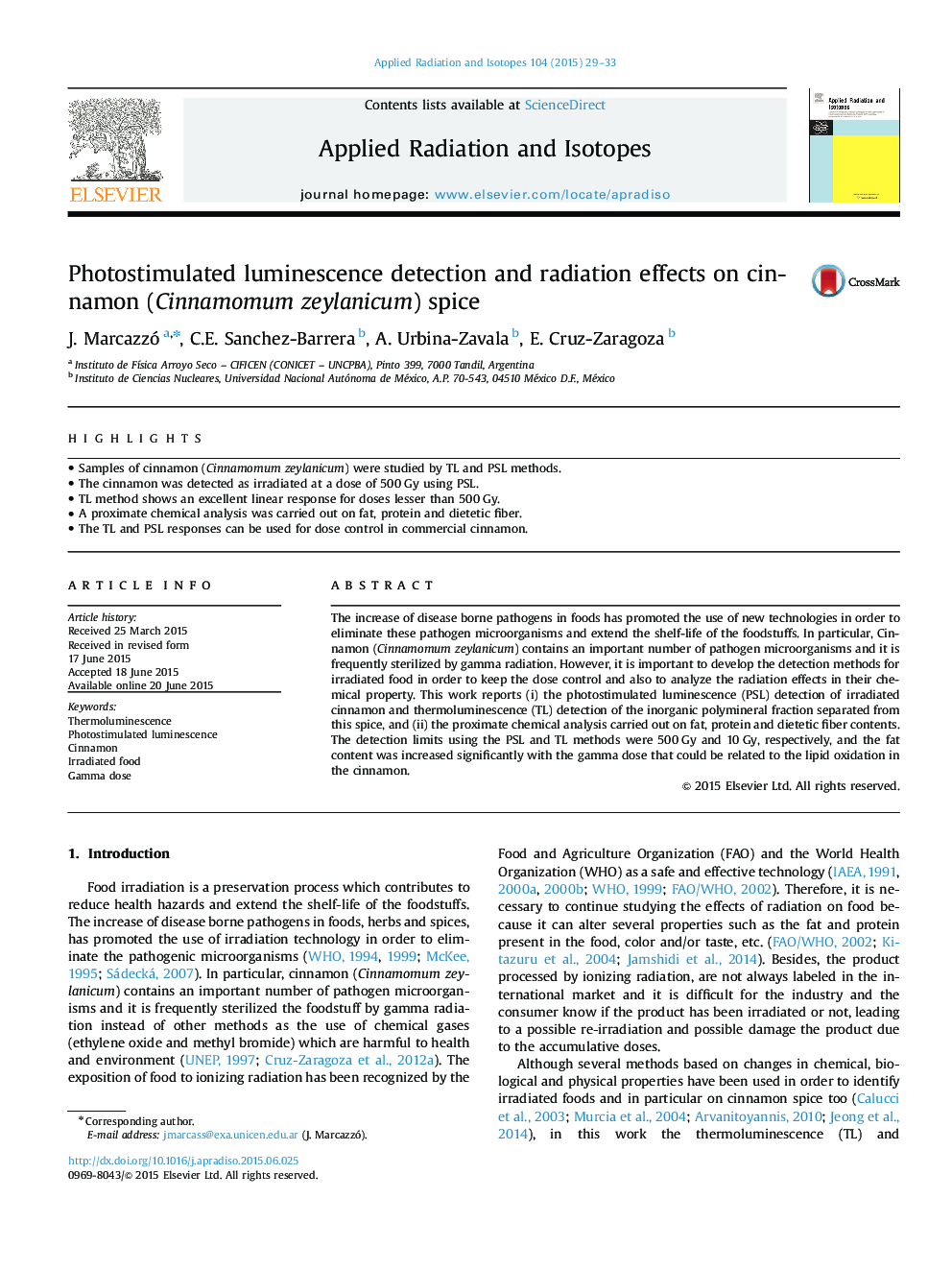| Article ID | Journal | Published Year | Pages | File Type |
|---|---|---|---|---|
| 1875924 | Applied Radiation and Isotopes | 2015 | 5 Pages |
Abstract
The increase of disease borne pathogens in foods has promoted the use of new technologies in order to eliminate these pathogen microorganisms and extend the shelf-life of the foodstuffs. In particular, Cinnamon (Cinnamomum zeylanicum) contains an important number of pathogen microorganisms and it is frequently sterilized by gamma radiation. However, it is important to develop the detection methods for irradiated food in order to keep the dose control and also to analyze the radiation effects in their chemical property. This work reports (i) the photostimulated luminescence (PSL) detection of irradiated cinnamon and thermoluminescence (TL) detection of the inorganic polymineral fraction separated from this spice, and (ii) the proximate chemical analysis carried out on fat, protein and dietetic fiber contents. The detection limits using the PSL and TL methods were 500Â Gy and 10Â Gy, respectively, and the fat content was increased significantly with the gamma dose that could be related to the lipid oxidation in the cinnamon.
Related Topics
Physical Sciences and Engineering
Physics and Astronomy
Radiation
Authors
J. Marcazzó, C.E. Sanchez-Barrera, A. Urbina-Zavala, E. Cruz-Zaragoza,
